Professor Lihong V. Wang, a Member of the U.S. National Academy of Engineering (NAE) and Chair Professor at the California Institute of Technology, visited the Photoacoustic Imaging Laboratory at the Shenzhen Institutes of Advanced Technology, Chinese Academy of Sciences, on April 13, 2024, at the invitation of President Hairong Zheng and Researcher Chengbo Liu. During his visit, he delivered an academic lecture titled "Photoacoustic, Light-speed, and Quantum Imaging."Professor Wang presented a series of research achievements addressing optical penetration challenges.
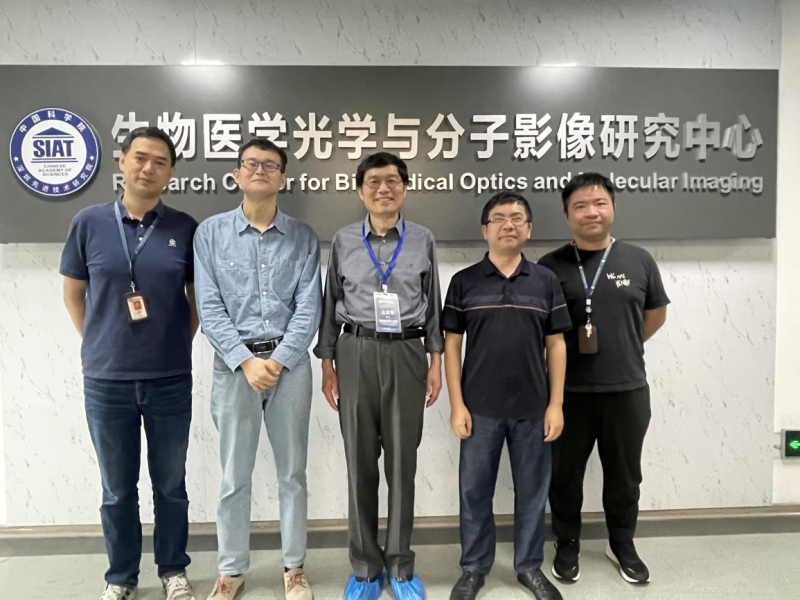
Professor Lihong V. Wang, NAE Member (center), posed for a group photo with Principal Investigators (PIs) of the Biomedical Optics Center at the Shenzhen Institutes of Advanced Technology, Chinese Academy of Sciences.

Professor Lihong V. Wang engaged in discussions with faculty and students at the Shenzhen Institute of Advanced Technology, Chinese Academy of Sciences
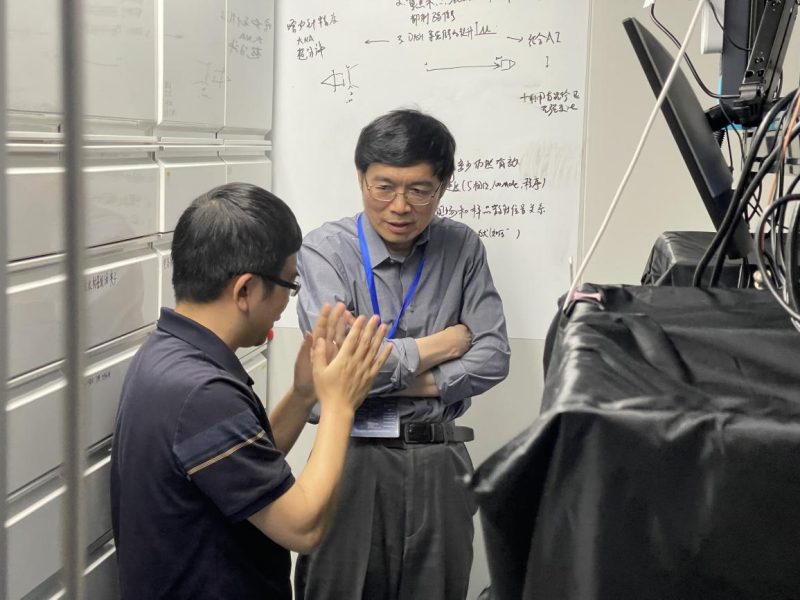
Professor Lihong V. Wang and Researcher Wei Zheng engaged in discussions within the laboratory
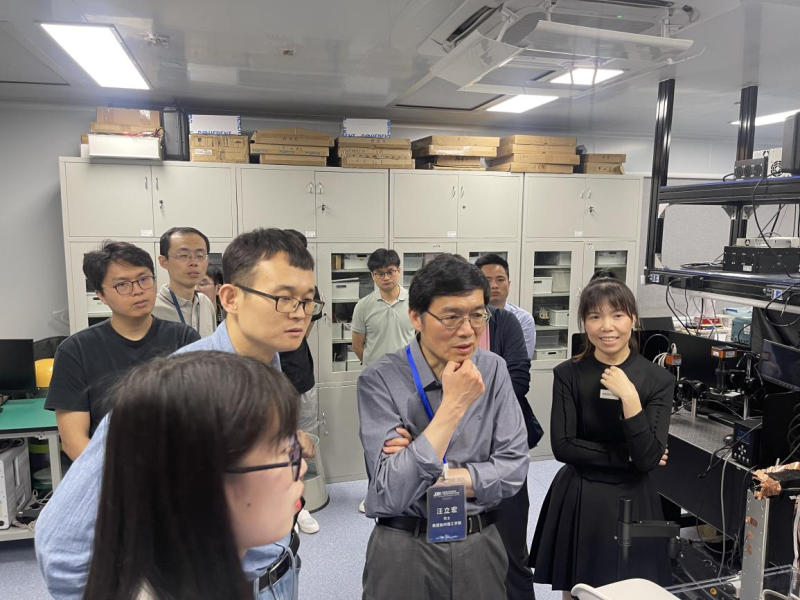
Professor Lihong V. Wang and Researcher Chengbo Liu engaged in discussions within the laboratory
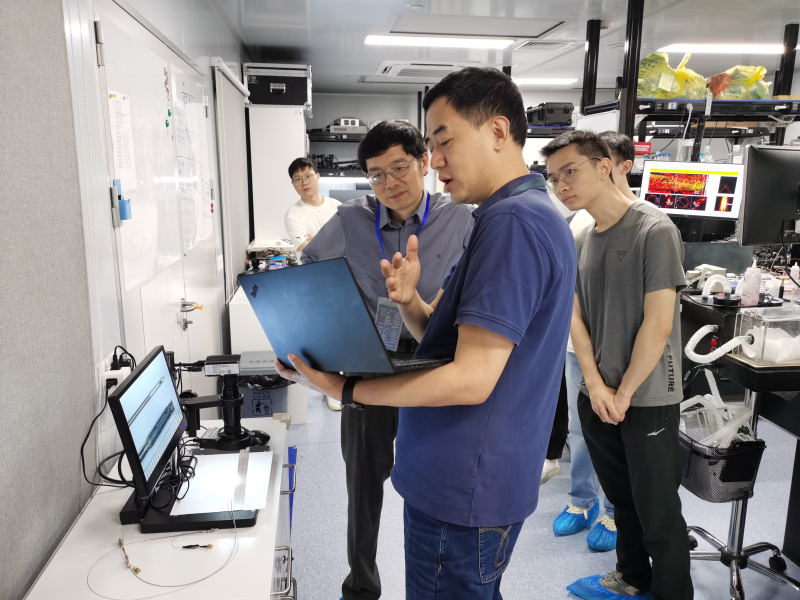
Professor Lihong V. Wang and Researcher Xiaojing Gong engaged in discussions within the laboratory
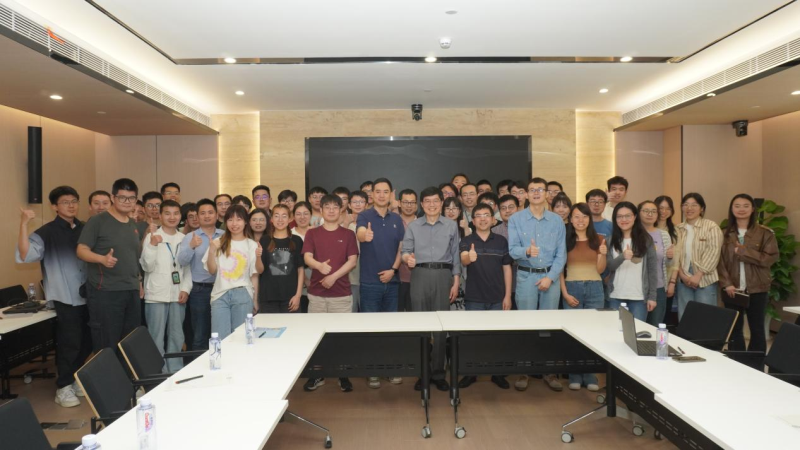
Professor Lihong V. Wang(center), posed for a group photo with the faculty and students of the Shenzhen Institutes of Advanced Technology, Chinese Academy of Sciences
Professor Lihong V. Wang’s research achievements span photoacoustic computed tomography (PACT), photoacoustic microscopy, single-element detector-based fast photoacoustic imaging, and ultra-high-speed optical imaging. His team achieved the first functional photoacoustic tomography through the scalp and skull, enabling high-resolution imaging of human brain functions by integrating functional photoacoustic tomography with 7-T fMRI technology. This work demonstrated direct comparisons between functional PACT and fMRI for human brain imaging.
Additionally, through compressed sensing ultra-fast photography technology, Professor Wang’s team achieved real-time imaging at 100 billion frames per second, observing phenomena such as electrical impulses propagating along myelinated axons and the oscillatory behavior of photon beams. These achievements not only push the boundaries of photoacoustic and optical technologies but also lay a critical foundation for next-generation medical diagnostics and imaging research.
Personal Profile:
Professor Lihong V. Wang holds the Bren Professorship in Medical Engineering and Electrical Engineering at the California Institute of Technology (Caltech) and serves as the Andrew and Peggy Cherng Chair in Medical Engineering. A Member of the U.S. National Academy of Engineering (NAE), he has authored 590 peer-reviewed journal articles, delivered 580+ invited lectures, and received numerous awards including the Joseph W. Goodman Book Writing Award (for Biomedical Optics: Principles and Imaging), NSF CAREER Award, NIH Director’s Pioneer Award, NIH Director’s Transformative Research Award, OSA C.E.K. Mees Medal, IEEE Technical Achievement Award, IEEE Biomedical Engineering Award, SPIE Britton Chance Biomedical Optics Award, IPPA Senior Award, and OSA Michael S. Feld Biophotonics Award. Professor Wang is a Fellow of AAAS, AIMBE, IAMBE, IEEE, OSA, SPIE, and a Foreign Fellow of the Chinese Optical Society, reflecting his global influence in interdisciplinary research spanning biomedical imaging, optics, and engineering.